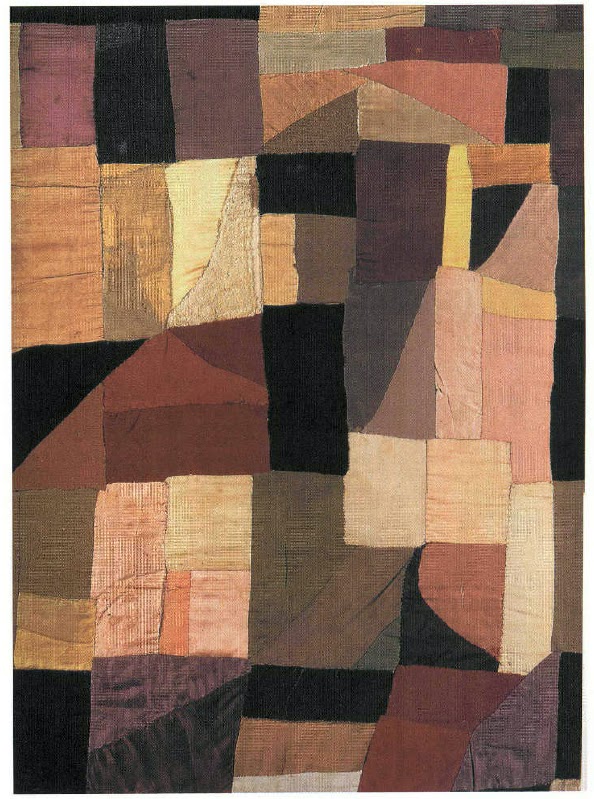 |
| Baby quilt, Sonia Delaunay, 1912 |
In 1980 I saw a show of Sonia Delaunay’s embroidered textiles at the Albright-Knox Art Gallery in Buffalo. If I hadn’t been with a very rational friend, I’d think I imagined it, because I’ve seen nary a trace of that work since, online or elsewhere.
I was reminded of it yesterday when writing about Mary Delany, because both were attempting to bridge the gap between high art and women’s traditional crafts.
 |
|
From La prose du Transsibérien et de la Petite Jehanne de France, a collaborative artist’s book by Sonia Delaunay and Blaise Cendrars, featuring the Eiffel Tower.
|
Sonia Stern (Terk) was born in Ukraine in 1885. At a young age she was sent to live with relatives in St. Petersburg, where she had the benefits of affluence, ultimately culminating with an art education in Karlsruhe and Paris. There she entered a marriage of convenience until she eventually met and married the painter Robert Delaunay.
 |
|
Rythme, 1938, Sonia Delaunay
|
The couple pioneered a form of painting called Orphism, which was the intermediary step between Cubism and Abstract Expressionism. While art critics ponder its roots in Fauvism and the writings of Paul Signac and others, I see it as based in quilting.
 |
| Bathing suit, 1928, Sonia Delaunay |
There are historical grounds for that, as well. “About 1911 I had the idea of making for my son, who had just been born, a blanket composed of bits of fabric like those I had seen in the houses of Russian peasants. When it was finished, the arrangement of the pieces of material seemed to me to evoke cubist conceptions and we then tried to apply the same process to other objects and paintings,” Sonia Delaunay wrote.
 |
|
Simultanéisme dress, 1913, Sonia Delaunay
|
The period between the World Wars was one of great invention for her. She designed fabrics, theater and movie sets and costumes, and opened a fashion studio. She lectured at the Sorbonne and had a pavilion at the 1925 Exposition Internationale des Arts Décoratifs et Industriels Modernes in Paris (which gave us the term Art Deco).
 |
|
Printed silk satin with metallic embroidery dress, c. 1925-28, Sonia Delaunay.
|
Sonia Delaunay outlived her husband by decades. After his death from cancer in 1941, she continued to paint and design, eventually being decorated with the Ordre national de la Légion d’honneur.
 |
|
Still photo from Le P’tit Parigot, 1926, costume and set by Sonia Delaunay.
|
The textile embroideries I saw in 1980 combined two great interests of hers—words and needlework. It’s a pity they’ve vanished from modern consciousness. But that’s often the lot of women’s design—influential, intellectual—and ultimately forgotten.


